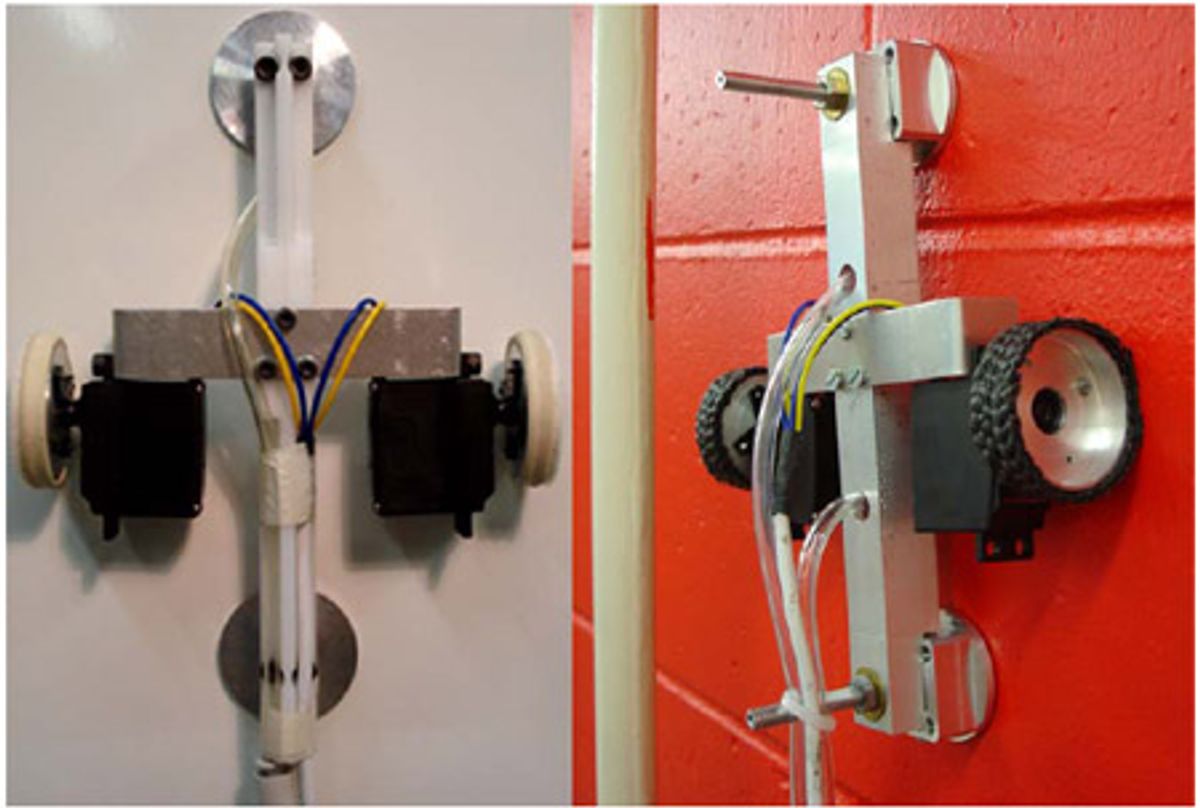There are all kinds of ways to stick to a surface, but one of the simplest is to use a gripper that operates on the Bernoulli principle. All the Bernoulli principle says is that as a liquid moves faster, its pressure decreases. For the purpose of a robotic gripper, air counts as a fluid, and if you squirt air out around the edges of a circular gripper fast enough, it'll start to generate a vacuum force that's strong enough to grab things without the surface of the gripper actually needing to touch them. The major upside of this technique is that you get a non-contact vacuum grip, so it's useful for grabbing stuff that's sterile or fragile.
Image: Bosch Rexroth AG
While Bernoulli grippers are fine for picking up things, they're not generally strong enough to enable a robot to support its own weight, much less climb. A research group from the University of Canterbury in New Zealand has developed a supersonic version of the Bernoulli gripper that's five times stronger than the conventional version, which is enough to allow a robot to climb on a bunch of different surfaces. And when you're watching this video, keep in mind that unlike pretty much every other climbing robot in existence, the grippers on this robot aren't touching the wall:
The geometry of the new type of air gripper (or non-contact adhesive pad, abbreviated NCAP) that this robot uses has been carefully designed to use a tiny little gap (a mere 25 μm in size) to force the airflow to go supersonic. Or more precisely, Mach 3. This doesn't require an increase in airflow or in pressure, it's all done with the geometry of the gripper itself compressing the airflow and speeding it up:
This airflow creates a low pressure vortex inside the gripper which provides the actual adhesion force, and in testing on the robot, this supersonic gripper is able to support five times as much weight as a conventional Bernoulli gripper, all without using any additional air volume or pressure.
As for the robot itself, it may be used for industrial inspections. The supersonic non-contact grippers will be available in "some months" for "a few hundred dollars," the researchers say.
The robot was presented in an ICRA paper entitled "An Investigation into Improved Non-Contact Adhesion Mechanism Suitable for Wall Climbing Robotic Applications," authored by Matthew Journee, XiaoQi Chen, James Robertson, Mark Jermy, and Mathieu Sellier.
Evan Ackerman is a senior editor at IEEE Spectrum. Since 2007, he has written over 6,000 articles on robotics and technology. He has a degree in Martian geology and is excellent at playing bagpipes.






